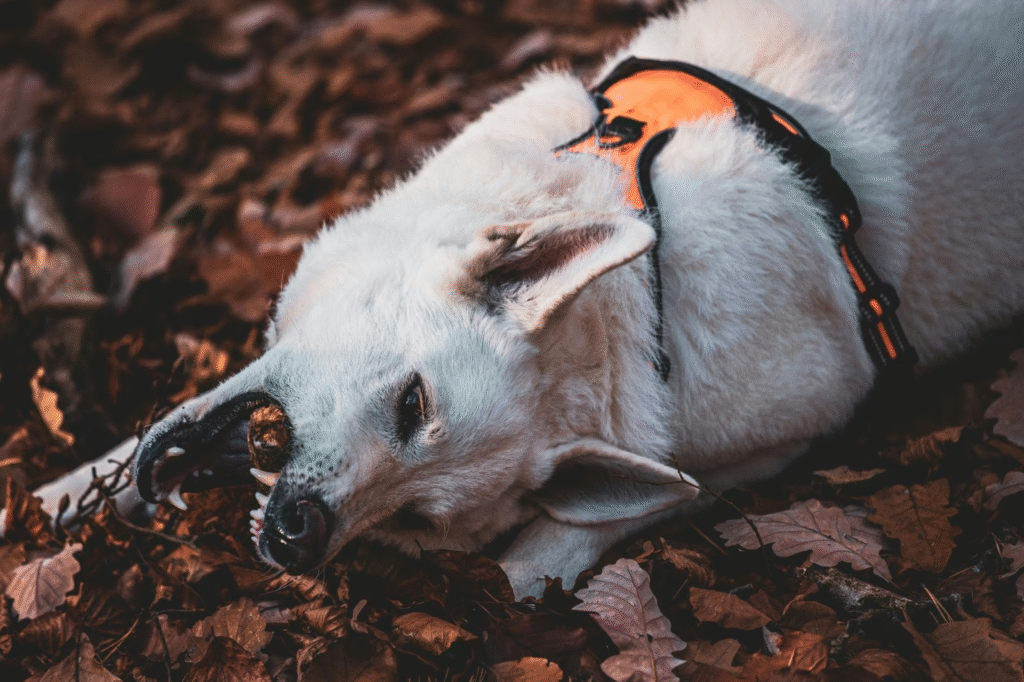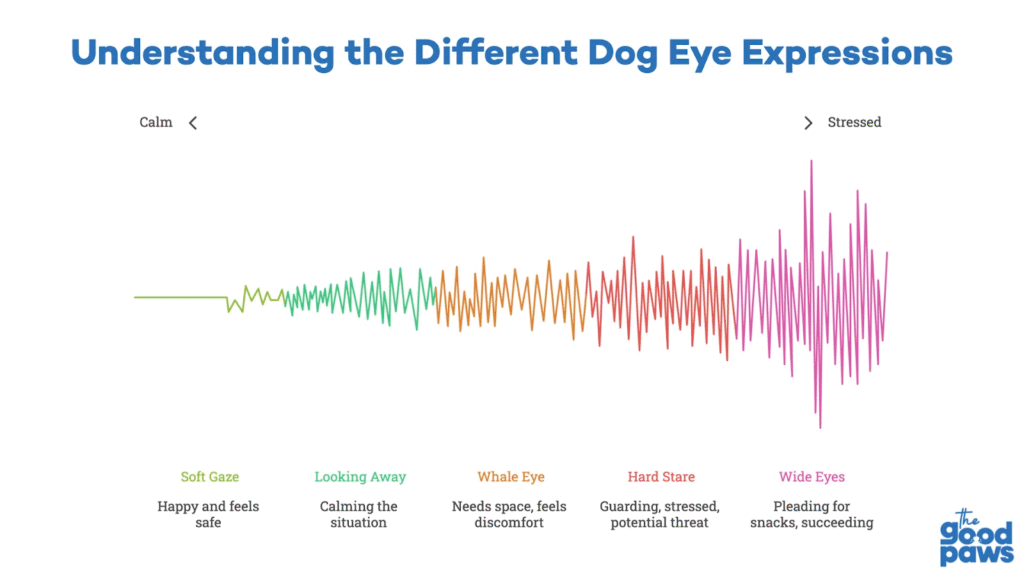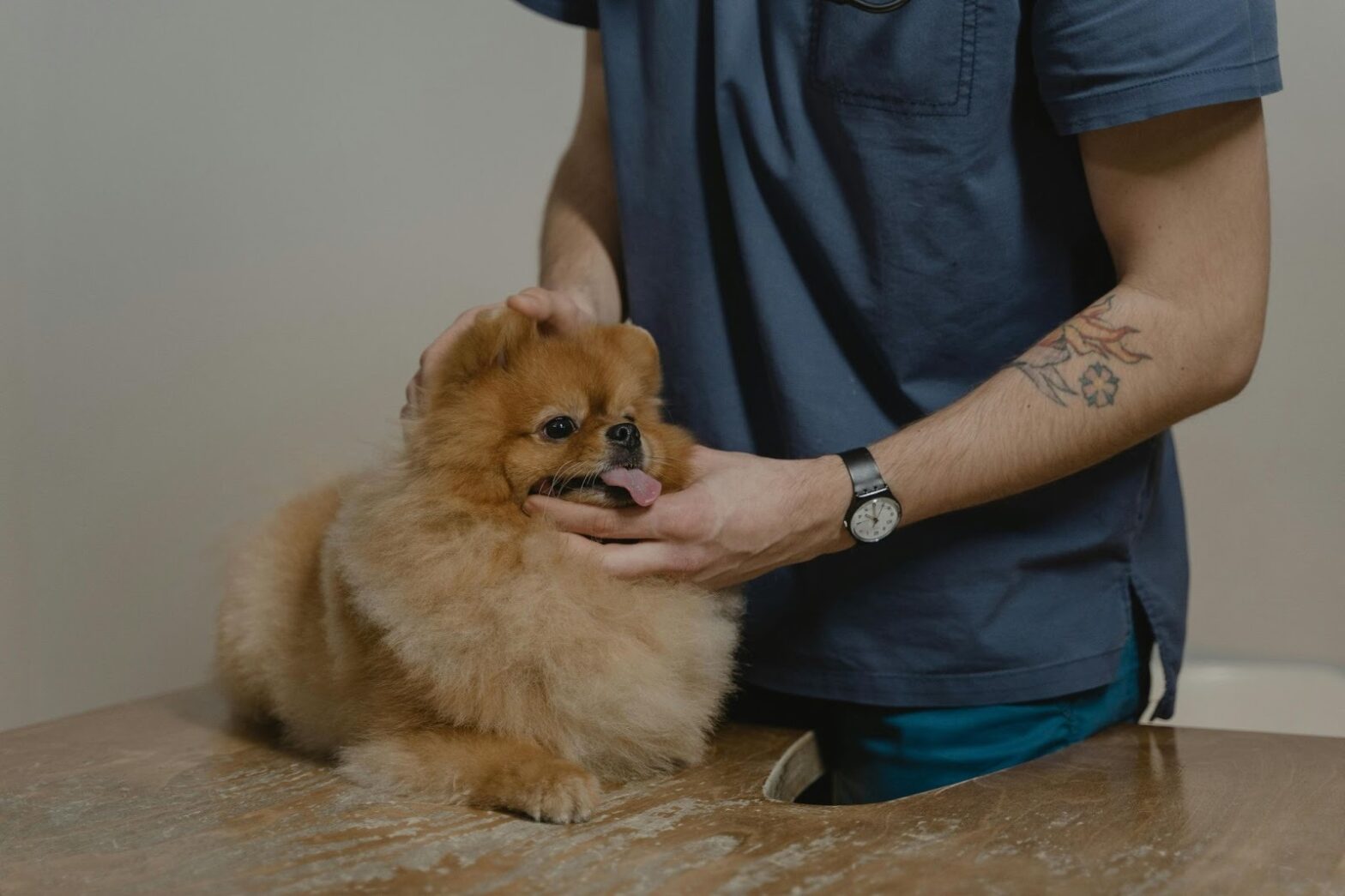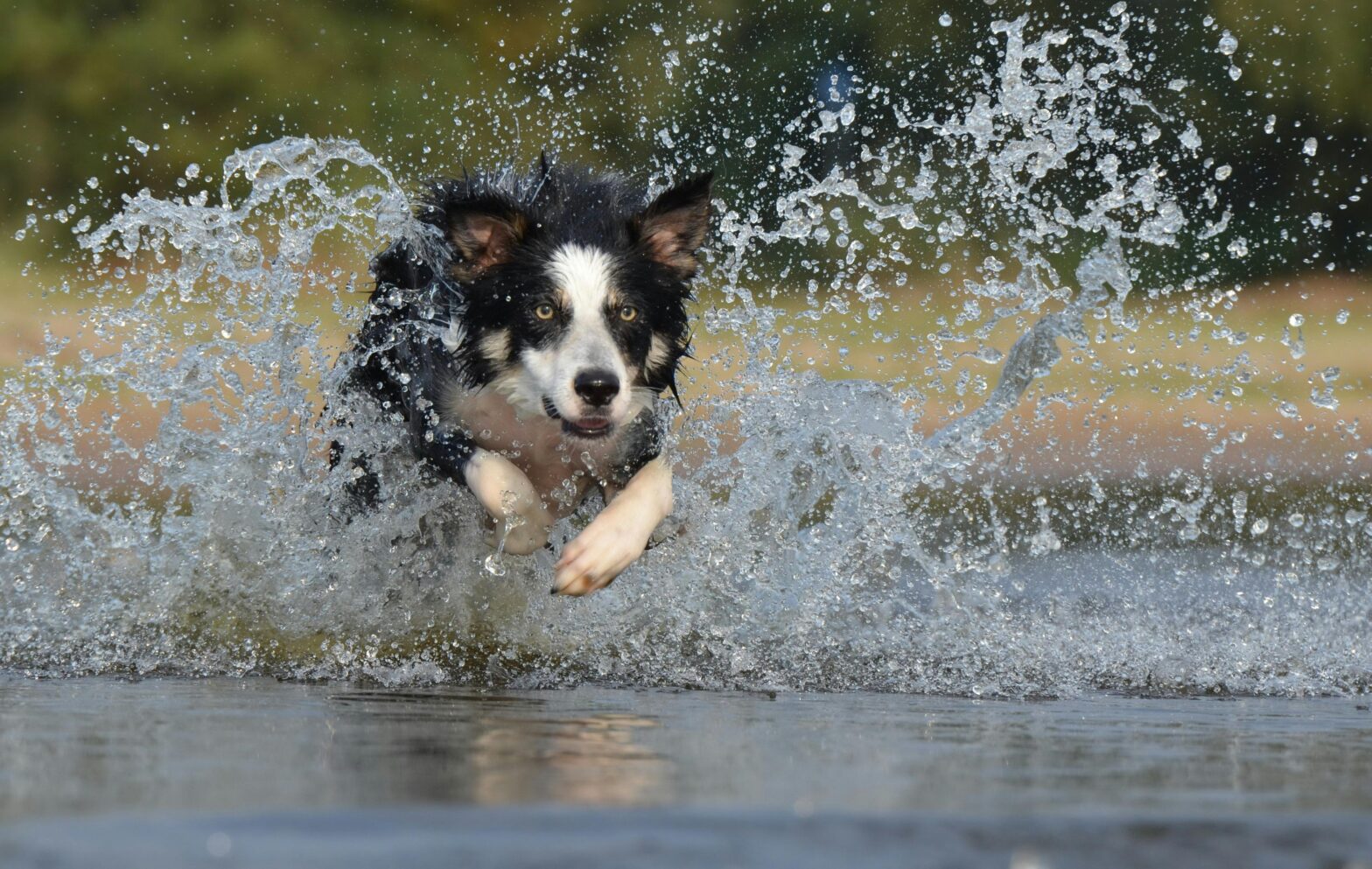This is part 2 in our three-part series on understanding your dog’s body language (read part 1 here). Last time, we tackled tails (spoiler: wagging ≠ happy). This time, let’s go above the neck.
Imagine if your ears turned every time someone opened the fridge.
Or if your eyes could shoot side-eye so intense, so intense that it came with subtitles.
Welcome to your dog’s world.
While you’ve been out here missing cues like a hooman on mute, your dog’s been throwing up signals with those twitchy ears and expressive eyeballs like it’s their full-time job.
Because ears and eyes, oh boy, they’re extra! And once you start decoding them, you’ll realise your dog’s been side-eyeing your life choices this whole time.
Ear Expressions: Those Adorable Satellite Dishes for Feelings
Dog ears are the Swiss Army knife of communication. They can perk up, flatten down, swivel around, and do this weird half-mast thing that makes them look perpetually confused. And unlike tails, which are doing their own chaotic thing back there, ears are right up front where everyone can see them.
A fun fact about dog ears is that they’re controlled by eighteen different muscles. Eighteen! Meanwhile, we humans are over here struggling to wiggle our ears at parties, when our dogs are out here conducting full orchestras with theirs.
But ears don’t work alone. Just like you can’t judge a person’s mood by their eyebrows alone (though, honestly, eyebrows do tell you a lot), you can’t read your dog’s entire emotional state from just their ear position.
Still, once you know what to look for, ears can be a mood ring you can trust.
The Ear Position Decoder Ring

Let’s understand what those ears are broadcasting to the world:
1. Perked and Forward: “Something Interesting Is Happening”
When your dog’s ears shoot up and forward, they’re saying, “Hold on, I need to investigate this situation.” This is peak alertness mode: could be excitement about dinner time, could be concern about that weird noise outside, could be them spotting a squirrel and calculating attack strategies.
Studies show that ears kept forward are associated with interest, attention, and approach-oriented intentions. Your dog is engaged and ready for whatever comes next.
But context matters, too. Forward ears with a loose, bouncy body? Probably excitement. Forward ears with a rigid, tense body might be your dog assessing whether something is a threat.
2. Relaxed to the Side: “Life Is Good, Thanks”
When your dog’s ears are just… hanging out in their natural position, that’s usually good. No muscle tension, no drama. This is your dog’s version of lying on the couch in sweatpants, completely content with life.
The neutral position varies wildly by breed, though. A German Shepherd’s relaxed ears look completely different from a Basset Hound’s. So you’ll need to learn what “chill” looks like for your specific pup.
3. Pinned Back: “This Is… A Lot Right Now”
Here’s where things get tricky, because pinned-back ears can mean many different things. And this is where a lot of us mess up our ear reading.
The science indicates that ears pulled back can indicate fear, anxiety, submission, or even excitement during greetings. Italian researchers found that dogs pull their ears back in varying degrees depending on their arousal state, from simple “back” for appeasement to completely flattened “seal ears” in extremely fearful dogs.
But to twist things up, some dogs pin their ears back when they’re happy. Golden Retrievers are notorious for this. They’ll flatten those ears against their heads while wiggling their entire bodies in pure joy, which can be confusing if you’re expecting fear signals.
Before You Assume (Because We All Do It)

Let’s bust the biggest ear myth: pinned ears don’t automatically mean aggression.
Most of the time, flattened ears are your dog trying to communicate discomfort, uncertainty, or “please don’t make this weird”. They’re trying to make themselves appear smaller and less threatening, which is, yes, the opposite of aggressive behavior. Truly fearful dogs will pin their ears so flat they almost disappear from view.
The One-Ear-Up Mystery
Sometimes you’ll catch your dog doing this adorable thing where one ear is up and the other is… not. It looks ridiculous, but it’s actually them processing conflicting information.
Scientists call this “airplane ears,” when ears are pulled slightly back and out to the sides, indicating a conflicting inner state. Your dog is saying, “I’m interested in this situation, but also uncertain about it.” Or sometimes it just means they’re mid-ear-adjustment and you happened to catch them in the awkward in-between moment. Dogs aren’t always performing Shakespeare; sometimes, they’re just scratching an itch.
The Matter of Breed
And, of course, like earlier, some breeds make this whole ear-reading thing way harder.
Floppy-eared dogs like Beagles and Basset Hounds have what’s called “dead ear,” which means their ears don’t move much, so you’re missing out on a whole communication channel. Meanwhile, dogs with cropped ears or naturally erect ears can be easier to read but might not have the full range of expression.
The best thing, of course, is to learn your individual dog’s ear language. What does an alert look like on your pup? What about relaxed? Stressed? Once you know their baseline, you can spot the variations.
Ear Detective Work
Next time you’re hanging out with your dog, try this little experiment. Make different sounds: shake a treat bag, ring the doorbell, put on their favorite TV show (don’t judge, we all have dogs who watch Netflix).
Watch how their ears respond. Can you see the difference between:
- The sharp, forward prick of “TREAT TIME?”
- The swiveling radar of “What was that noise?”
- The relaxed flop of “Oh, it’s just the neighbors again”
Dogs can rotate their ears independently like little satellite dishes, tracking multiple sounds at once. Once you start noticing this, you’ll realize your dog is running a surveillance operation 24/7.
Eye Contact: It’s Complicated (Like Human Dating)

If tails are the emotional playlist and ears are the mood ring, your pup’s eyes are the group chat: sometimes wide open, sometimes giving the most cryptic side-eye, sometimes screaming in ALL CAPS, and you almost miss it.
Soft Eyes, Hard Eyes, and the Notorious “Whale Eye”
Soft, squinty eyes? That’s your dog in chill mode. Happy, relaxed, possibly plotting a nap, the canine version of a cozy blanket and a big yawn.
Hard eyes is when your dog gives that cold, fixed stare: lids tight, no squint, all intensity; it’s DEFCON-1. Dogs do this when they’re guarding something or feeling upset. Long, hard stares can signal a prelude to “back off!”.
And let’s not forget the legendary “whale eye.” It’s when your dog is looking away but still side-eyeing you so hard you see the whites. It’s no sassy look but anxiety, stress, or “I really, really don’t want to be here.” Whale eye is your dog’s polite warning signal before things get awkward, especially when paired with a stiff posture or tucked tail.
Science jumps in here (and it’s fascinating). Studies have found that eye contact and eye orientation are a crucial part of canine communication, both with us and with other dogs. Our pups don’t merely see us; they read us, picking up on our attention, intent, and even our moods. But the meaning behind how they look at us is completely based on context.
- Prolonged eye contact: To another dog, this can mean challenge or confrontation. But with people, short, soft eye contact often just means “I’m tuned in.” Too intense, though, and it can mean “please stop.”
- Looking away: Far from being rude, it’s a dog’s way of calming things down. You know, like saying “let’s cool it” or “I’m not into this right now.” Many people misread this as stubbornness or aloofness, but research shows it’s more stress management and less snobbery.
The Compulsory Breed Check
Some breeds (Boston Terriers, Chihuahuas) have big, prominent eyes, so you might see more white even when they’re fine. Others, like whippets or collies, have deep-set eyes, so the warning can be super subtle. Always piece together the bigger body language picture.
You’re Saying Those Puppy Dog Eyes Are Manipulation???
Nope. Those big, droopy “please love me” eyes aren’t coincidental. Studies show dogs evolved special face muscles (that wolves don’t have) to make their eyes bigger and more expressive, literally so we’d adore and care for them. Brow raises, you know, those irresistible puppy eyes, are 100% on purpose.
Decoding Dog Eyes

- Soft gaze = Relaxed, happy, safe.
- Hard stare = Guarding, stress, threat (step away from the Kong).
- Whale eye = Anxiety, discomfort, “I need space.”
- Looking away = Trying to keep things calm.
- Wide, pleading eyes = Manipulating your snack supply (and succeeding).
The Eye Level Experiment
Next time your dog stares at you, a quick check will be handy:
- Are the eyes soft and squinty or wide and hard?
- Any extra white showing (whale eye)?
- What’s the rest of their body doing? Loose and wiggly, or tense and coiled?
If you spot a whale eye, check for other stress signals: pinned ears, lip licking, low tail, and adjust your approach.
Remember: your dog’s eyes are never lying. The more you tune in, the clearer those messages get, and, honestly, your dog will be thrilled you finally started speaking fluent eyeball!
You’re This Close to Fluent
So now you know.
Those floppy ears mean tactical mood signals.
And that side-eye? That’s more data for you!
Your dog has been broadcasting feelings in HD this whole time, and you’re finally starting to plug into the radio.
From us at The Good Paws to you—from twitchy ears to epic stink-eyes—it’s all good.
Got a pup who does full-body eye-rolls or mystery ear moves? DM us @thegoodpawsclub or drop it in the comments below, we love and live for the drama!
About the author: Amritesh Mukherjee is a writer, journalist, editor and companion to the handsomest doggo of the universe, Dusky.












